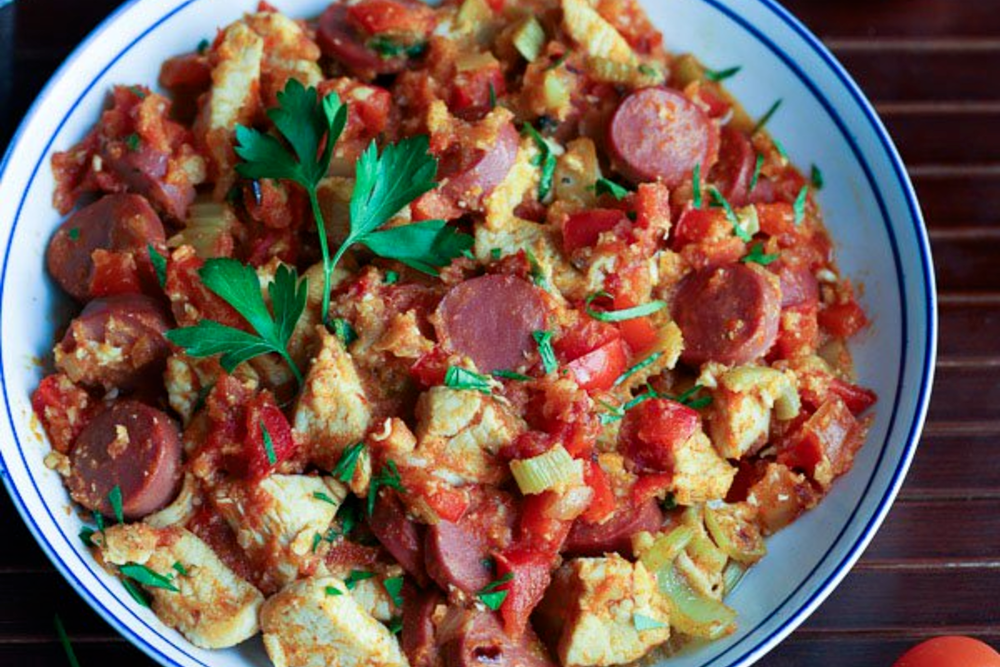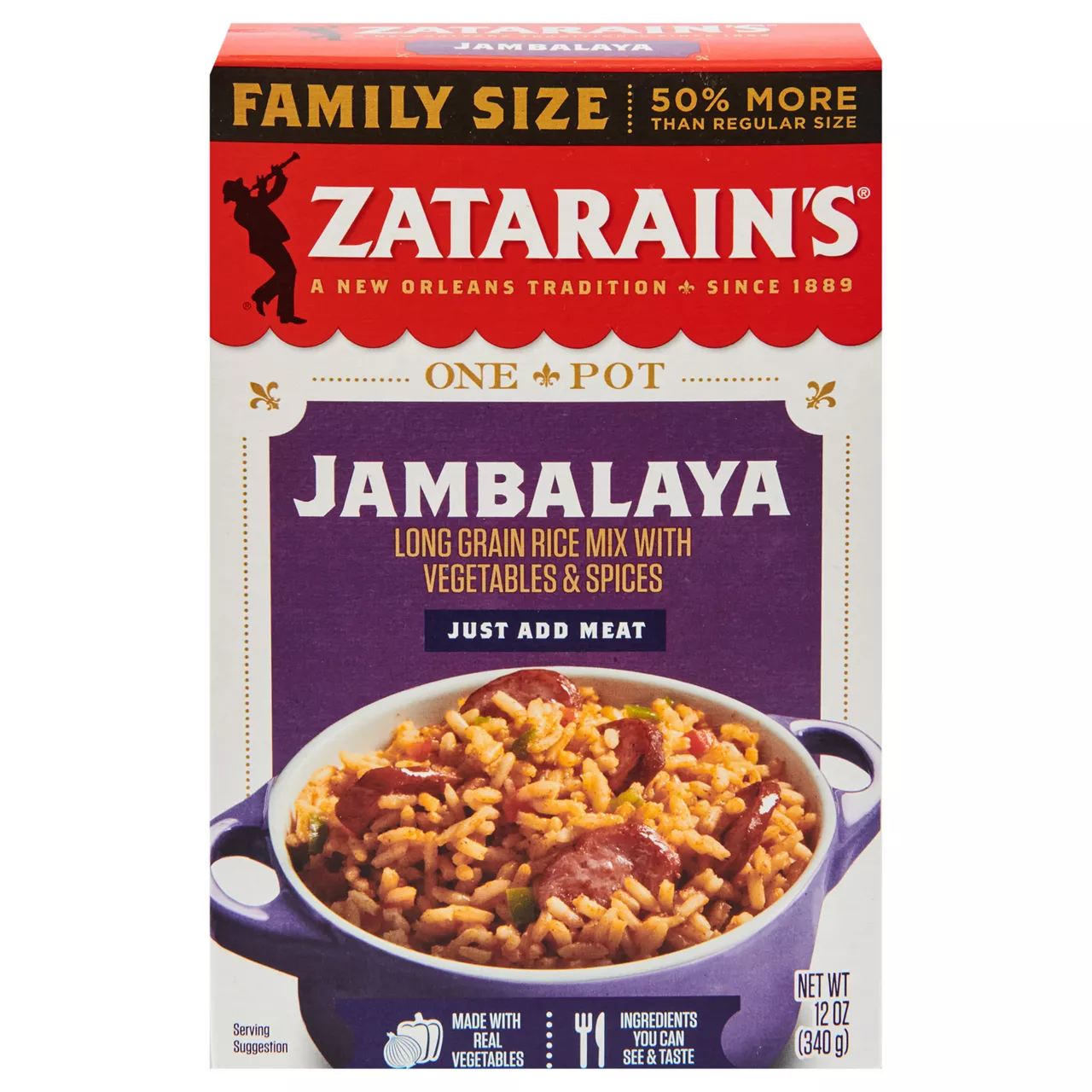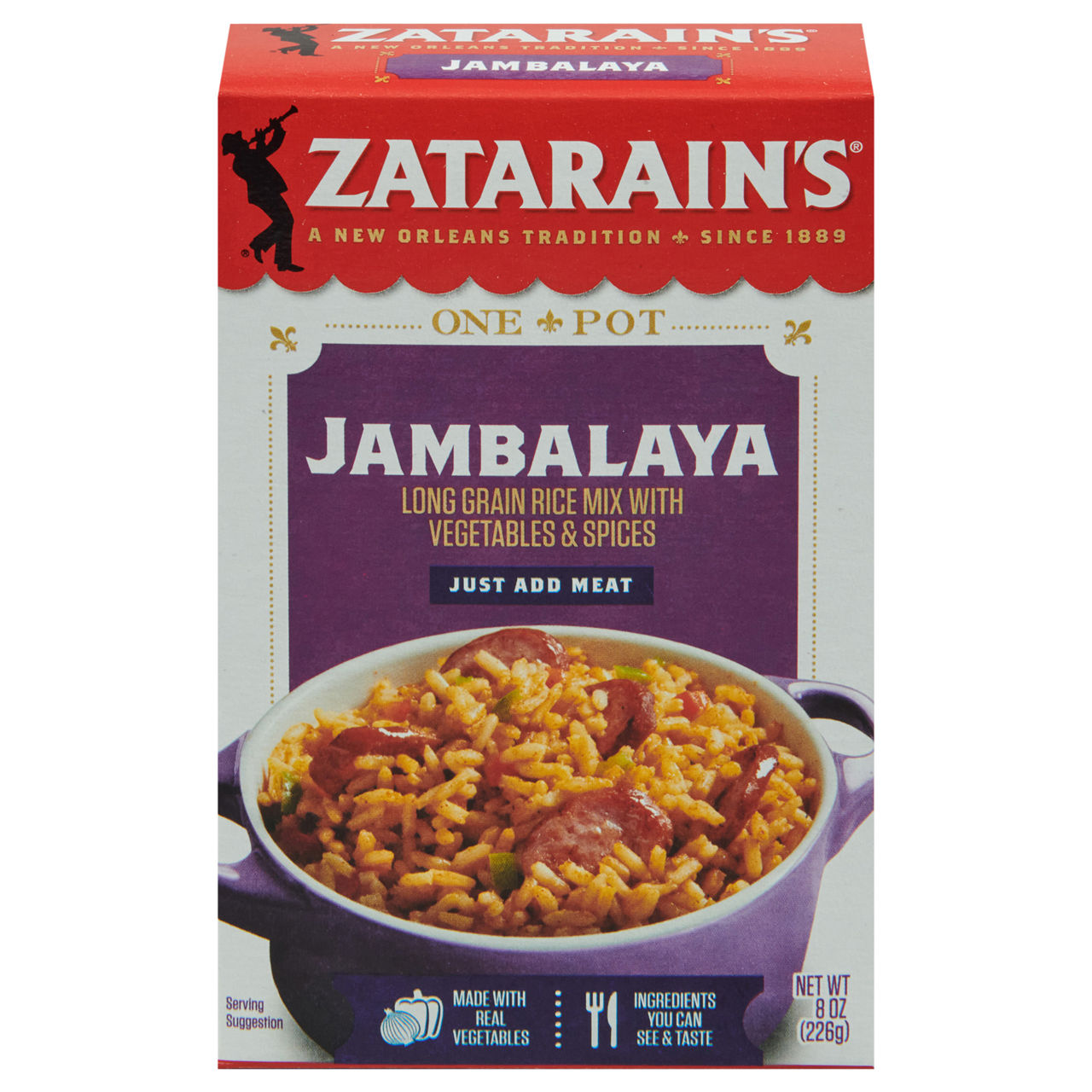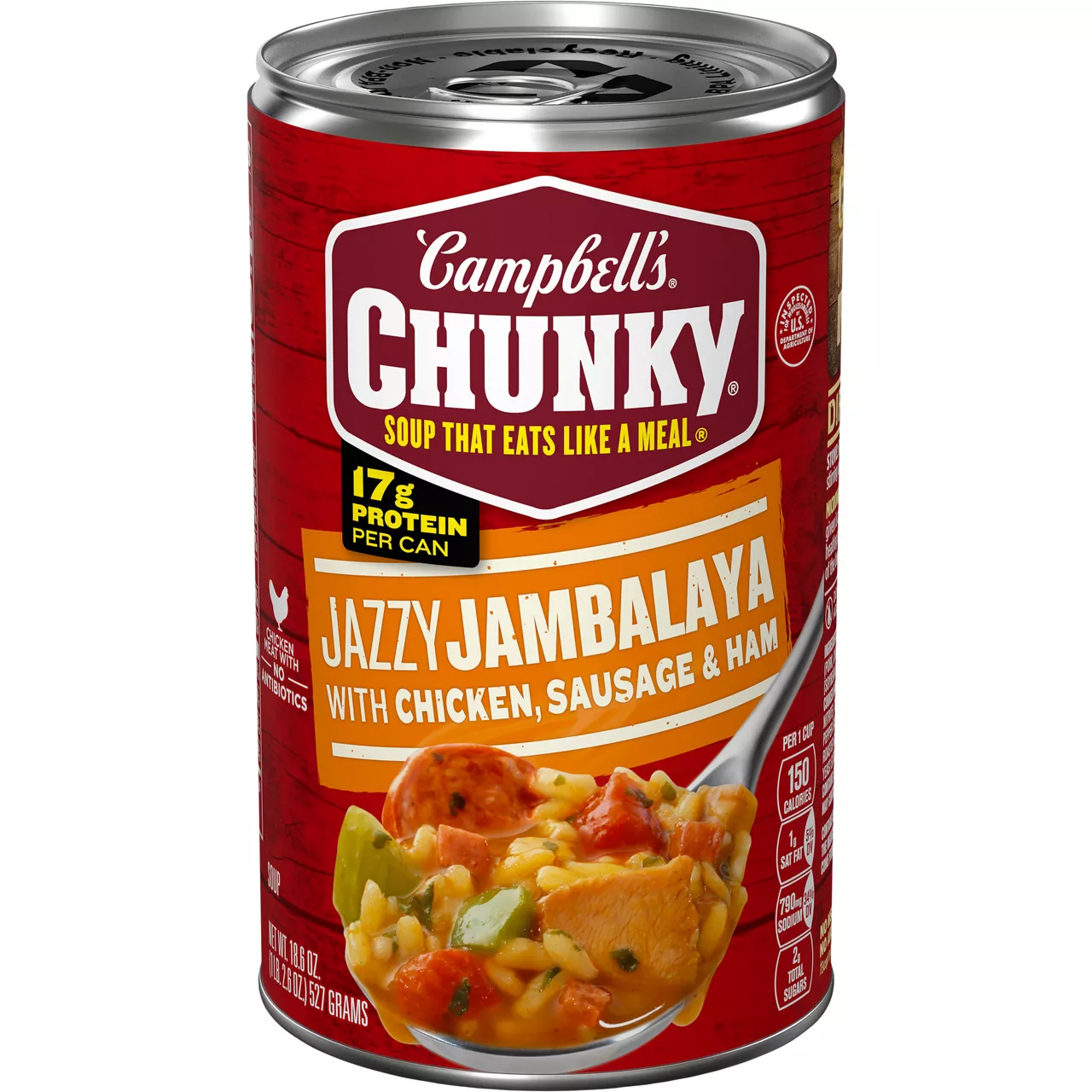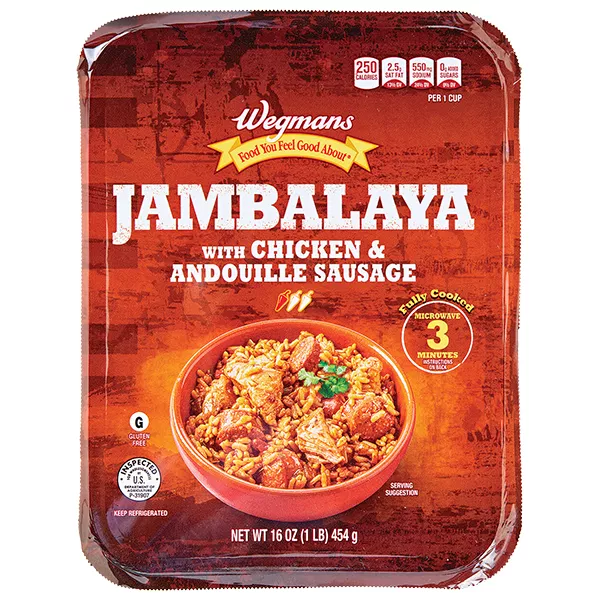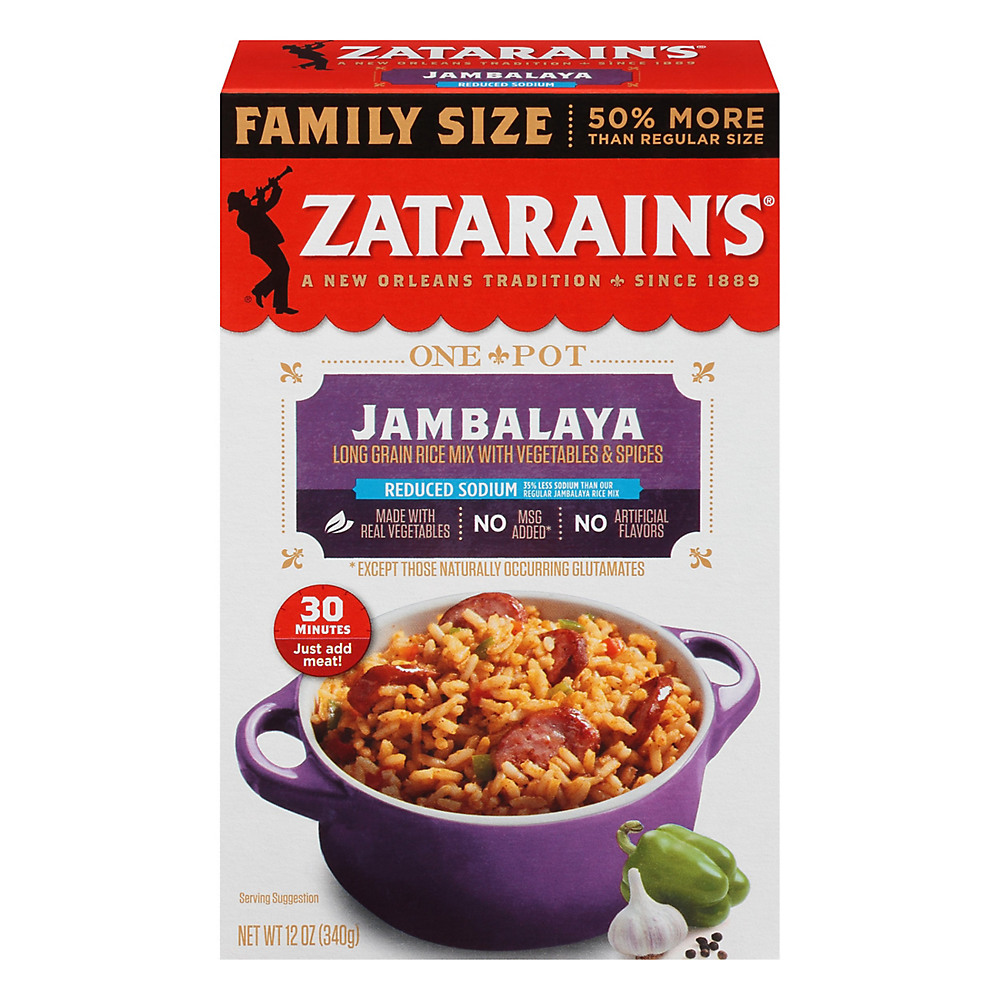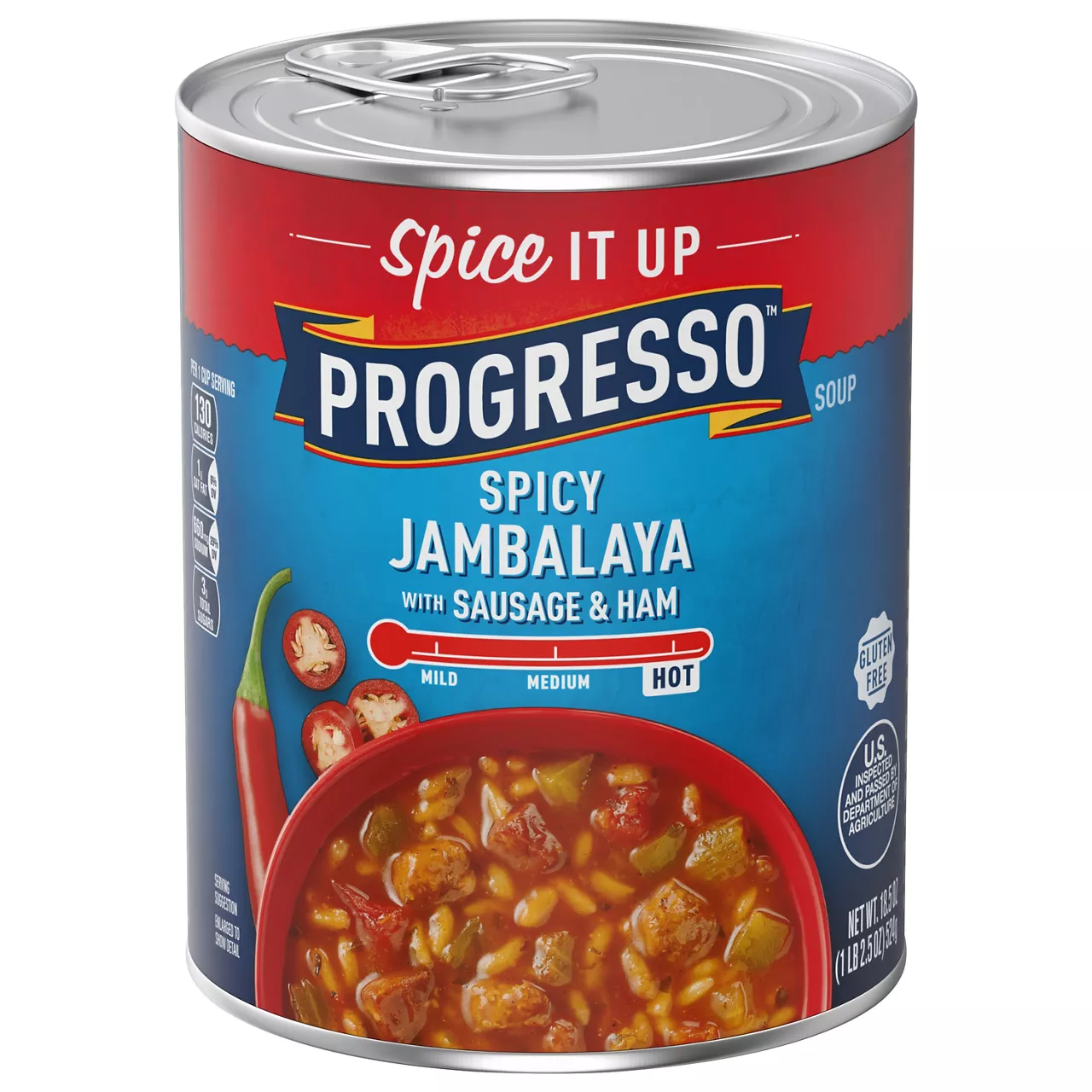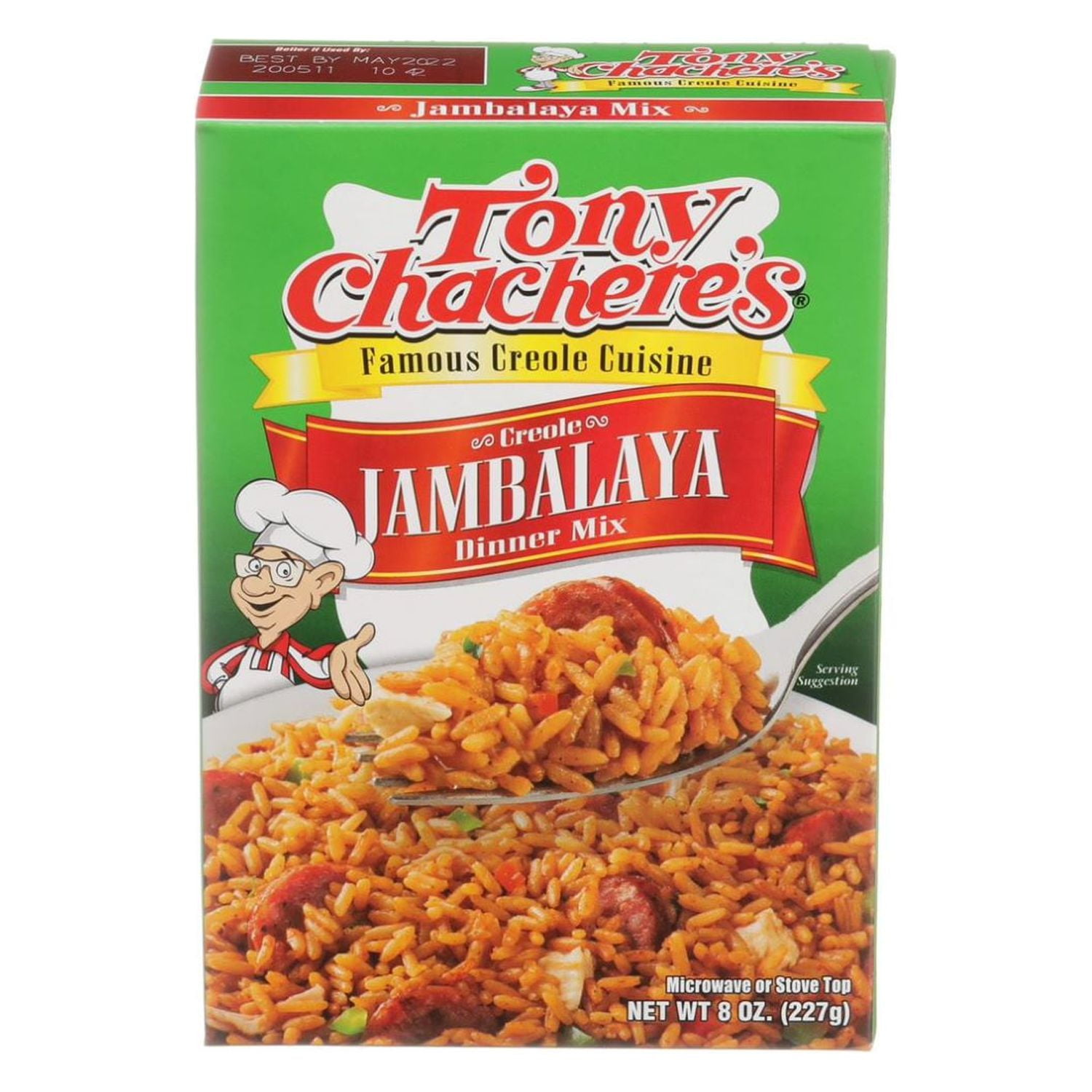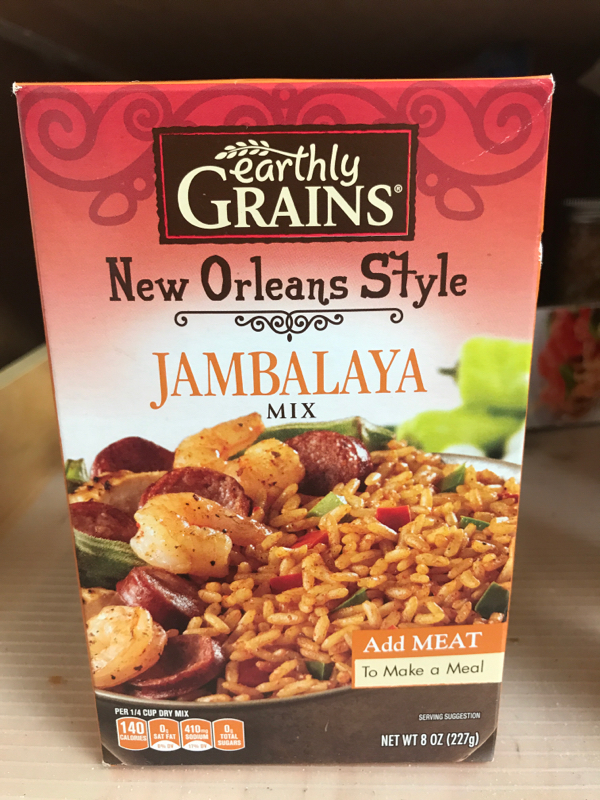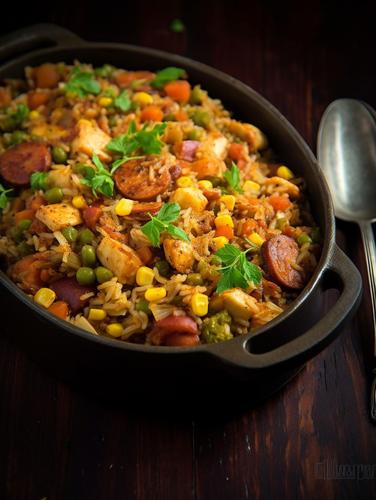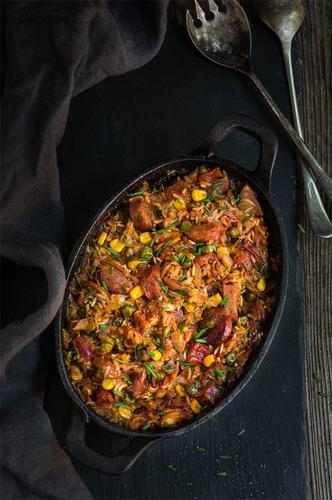MAIN DISHES
Jambalaya
Jambalaya is a classic one-pot dish originating from Louisiana, often associated with Creole and Cajun cuisine. It typically features a flavorful combination of rice, vegetables, and a variety of proteins such as chicken, sausage, shrimp, or some combination thereof. The dish's unique blend of spices, including cayenne pepper, thyme, and oregano, gives it a warm, robust flavor that is both comforting and satisfying.
As a versatile and hearty meal, jambalaya can be easily adapted to suit individual preferences and dietary restrictions. Jambalaya is particularly popular at social gatherings due to its large serving capacity and ease of preparation.
26%
CARBS
26%
FAT
48%
PROTEIN
Featured Articles
228 Jambalaya Products
Zatarain's Family Size Jambalaya Rice Dinner Mix
Zatarain's Jambalaya Rice Mix
Campbell's Chunky Soup, Jazzy Jambalaya with Chicken, Sausage and Ham Soup
Wegmans Jambalaya with Chicken & Andouille Sausage
Zatarain's Reduced Sodium Jambalaya Rice Dinner Mix
Progresso Soup, Spicy Jambalaya, Hot
Meal Simple by H-E-B Chicken & Sausage Jambalaya Bowl
Tony Chachere's Creole Jambalaya Dinner Mix
Earthly Grains New Orleans Style Jambalaya Rice Mix
Jambalaya Mix
23 Recipes for Jambalaya
3
One-Pot Savory Chicken Sausage Jambalaya
1
Cajun Chicken and Andouille Jambalaya
1
One-Pot Heartwarming Chicken and Sausage Jambalaya
2
Cajun Trinity Jambalaya with Chicken, Shrimp, and Sausage
4
One-Pot Cajun Burst Jambalaya
4
Savory Seafood and Sausage Jambalaya
78
Jambalaya with Shrimp and Andouille Sausage
1
Quick & easy chicken sausage jambalaya
Jambalaya FAQ
What is the difference between gumbo, jambalaya, and etoufee?
What kind of meat should I use for jambalaya?
What kind of rice should I use for jambalaya?
How do I make my jambalaya more flavorful?
How do I cook my jambalaya evenly?
Expiration & Storage Tips
When does Jambalaya expire?
Unopened, store-bought jambalaya lasts for about 1 to 2 days past the sell-by date on the package, though refrigeration will extend this by a few more days. If you prepare a homemade jambalaya, consume it within 3-4 days when kept in the refrigerator. Once opened, store-bought jambalaya should be eaten within 2 to 3 days. Frozen jambalaya can significantly extend the dish's shelf life, lasting up to six months in the freezer, but remember it's best consumed when fresh!
How do you tell if Jambalaya is bad?
There are a few telltale signs that your jambalaya has gone bad. First is the smell – any sour, rancid, or generally off-putting odor is a sure sign that you should dispose of your dish. Next up is texture; if the rice feels excessively mushy or becomes slimy, it means the dish is past its prime. You can also check for visual cues. Any mold or discoloration indicates spoilage.
Tips for storing Jambalaya to extend shelf life
• Store jambalaya in an airtight container to prevent moisture loss, which can negatively impact texture and flavor.
• Refrigerate your jambalaya within 2 hours of cooking to minimize the risk of bacterial growth.
• Split large amounts of jambalaya into smaller portions for freezing. This allows for convenient thawing and reheating without the need to defrost the entire batch.
• When reheating jambalaya, ensure it's piping hot throughout to kill any potentially harmful bacteria.
EXPIRES WITHIN
19 - 29
MONTHS
Health Info
Macros
21g
CARBS
21g
FAT
39g
PROTEIN
Allowed on these diets
LACTOSE FREE
GLUTEN FREE

